Asthma Presentation: Diagnosis, Treatment, and Nursing Management
VerifiedAdded on 2022/08/21
|8
|750
|18
Presentation
AI Summary
This presentation provides a comprehensive overview of asthma, a chronic respiratory disease affecting the lungs. It details the disease's inflammatory nature, symptoms such as chest tightness, shortness of breath, and cough, and its prevalence, particularly in children. The presentation explores triggering factors like viral infections and genetic issues, along with potential complications including headaches and respiratory infections. It discusses diagnostic methods like physical examinations and lung function tests, and outlines both long-term treatments involving drugs like salmeterol and flunisolide, and short-term medications such as ipratropium. The presentation also highlights non-pharmacological interventions like exercise and diet. Furthermore, it addresses nursing management, including goal setting for hygiene and airway preservation, patient assessment, and intervention strategies such as administering antibiotics and fluids. References to key research papers are included to support the information presented.
1 out of 8

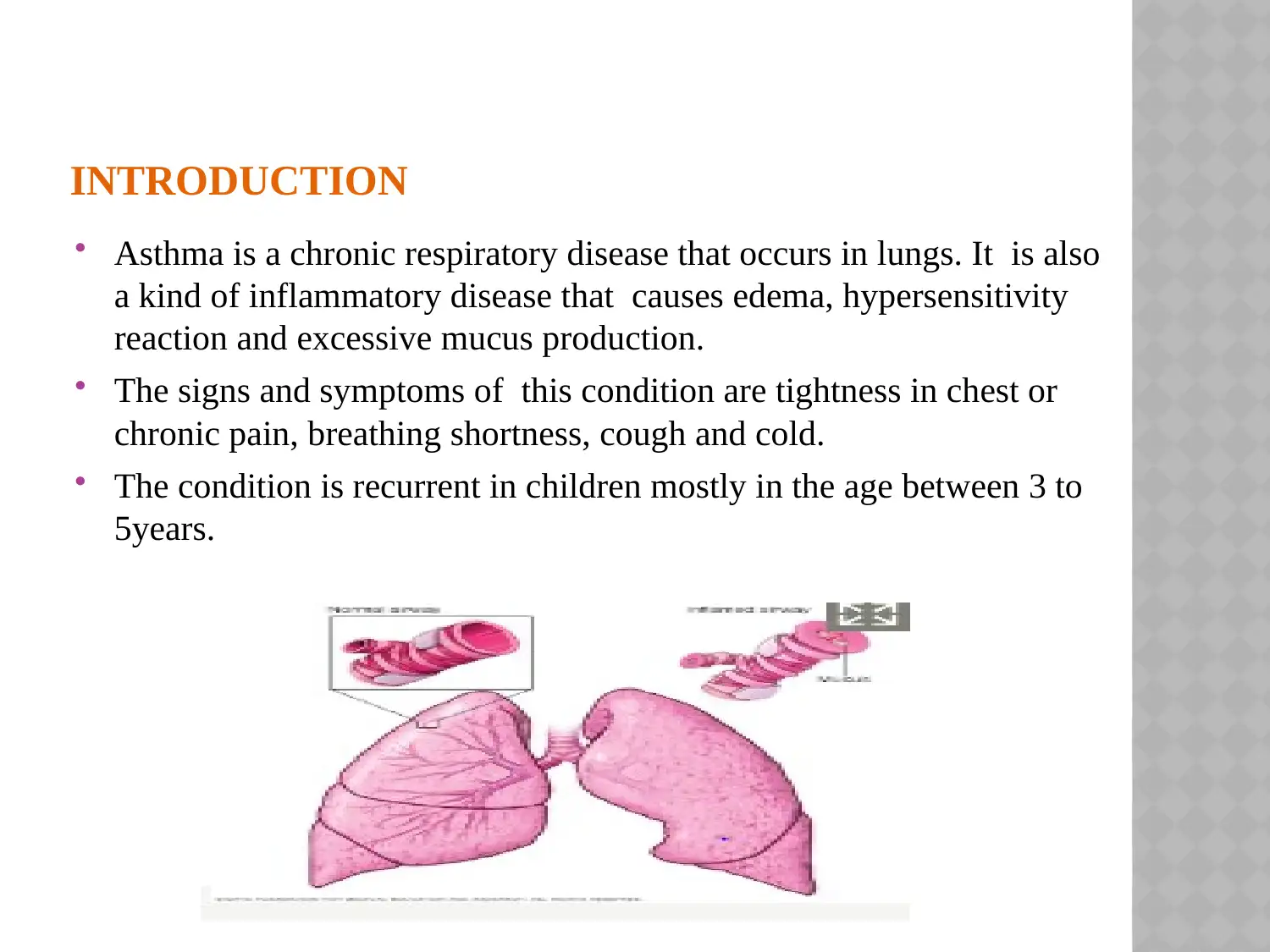
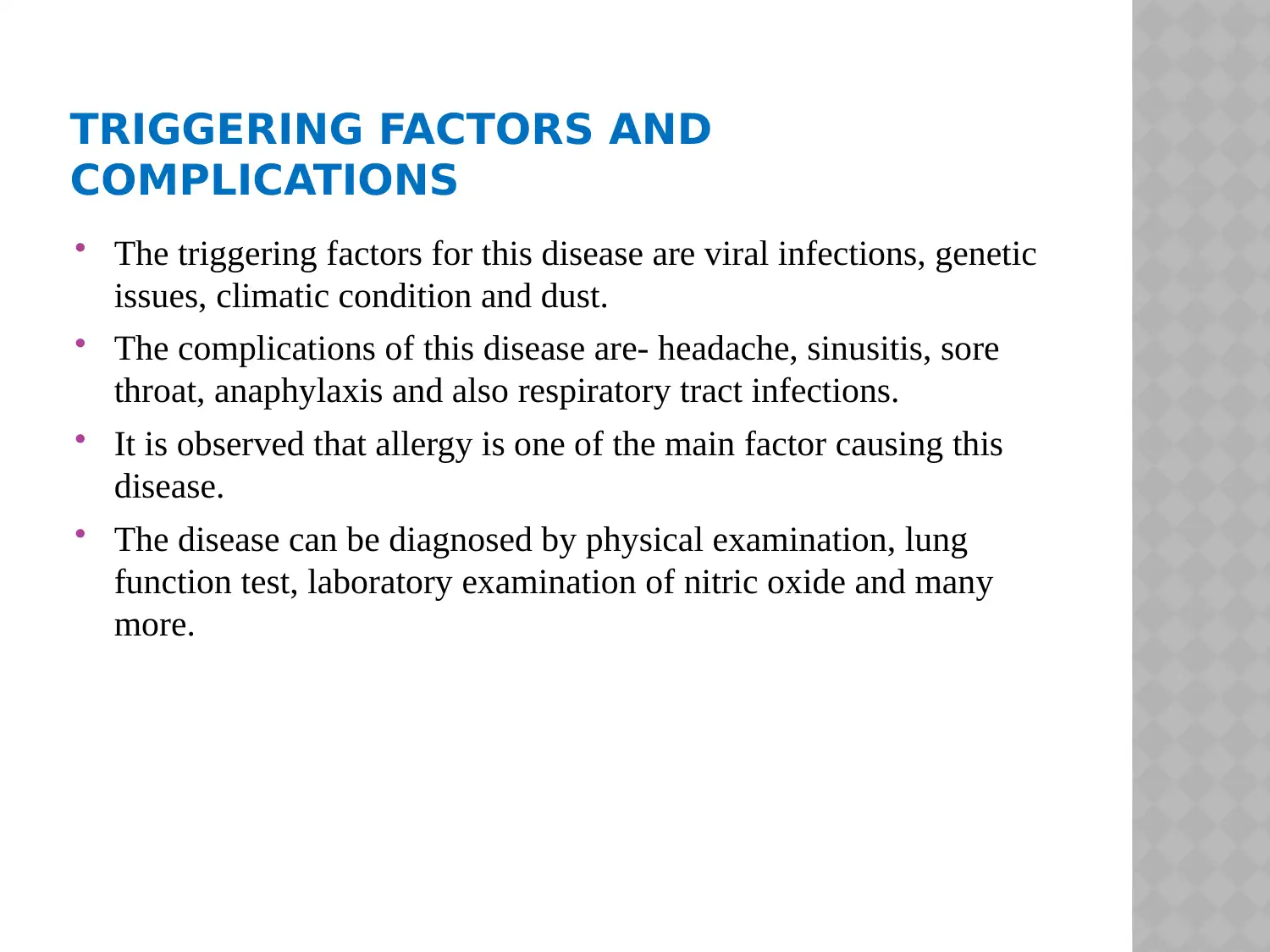

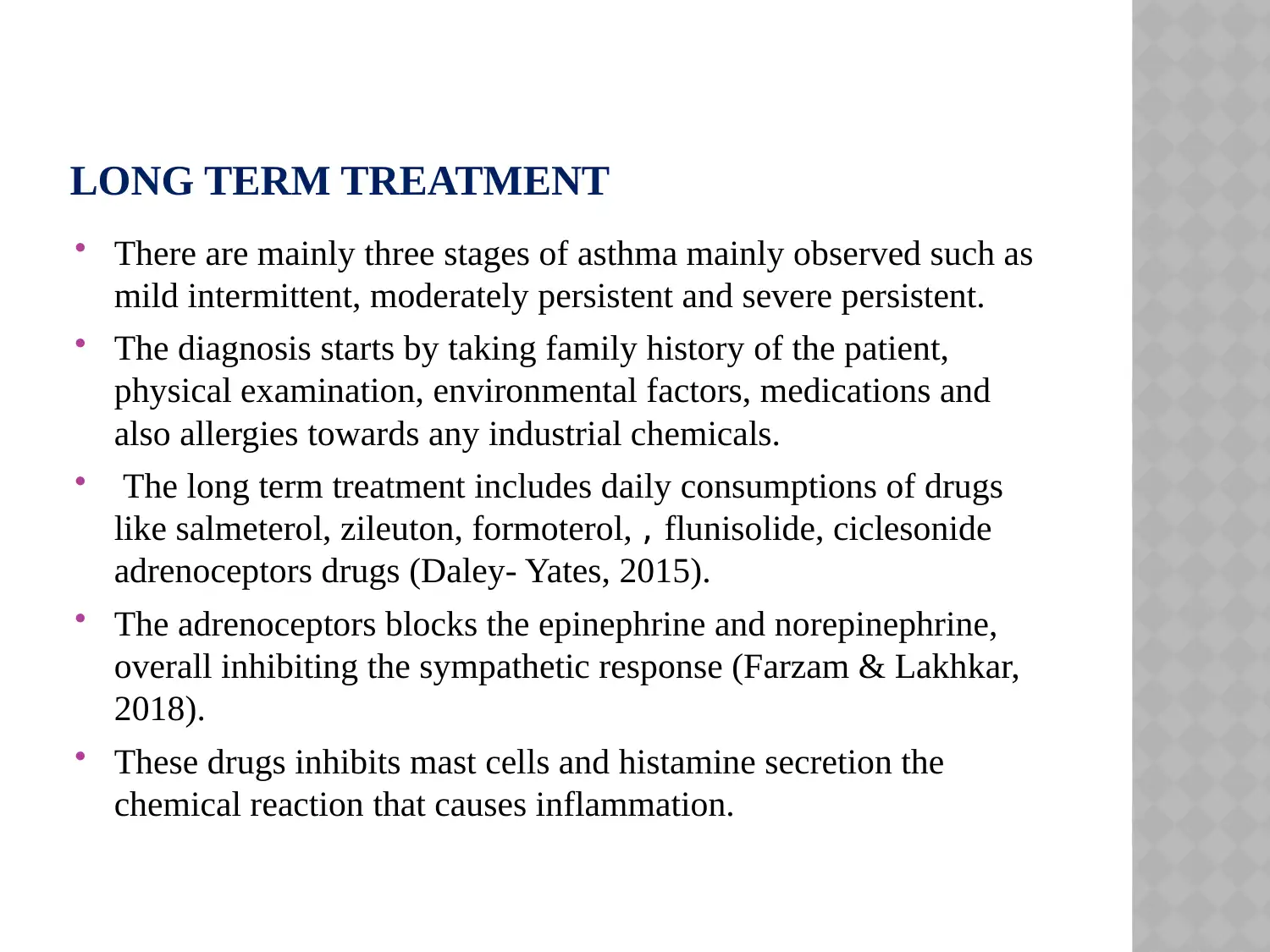
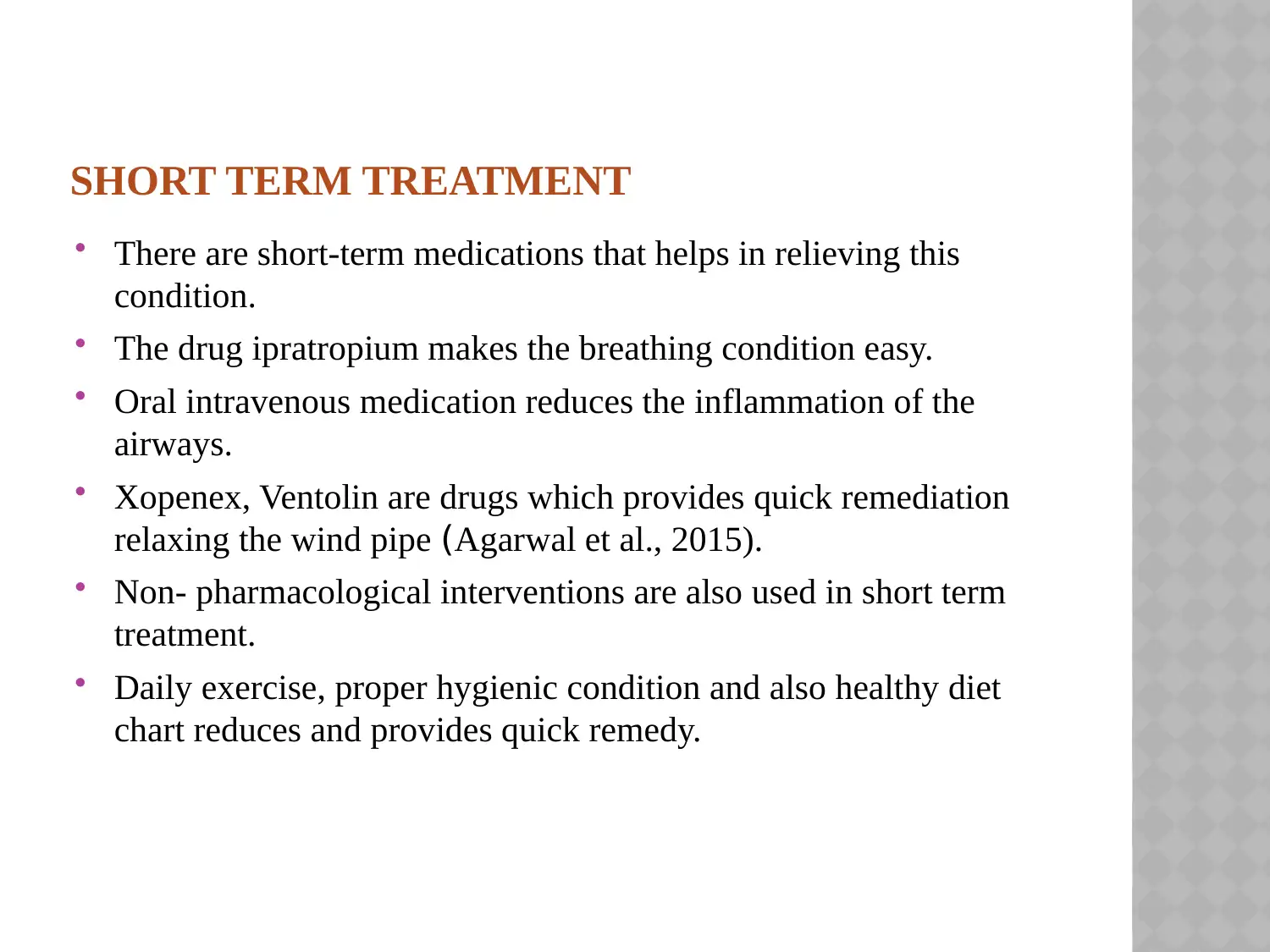
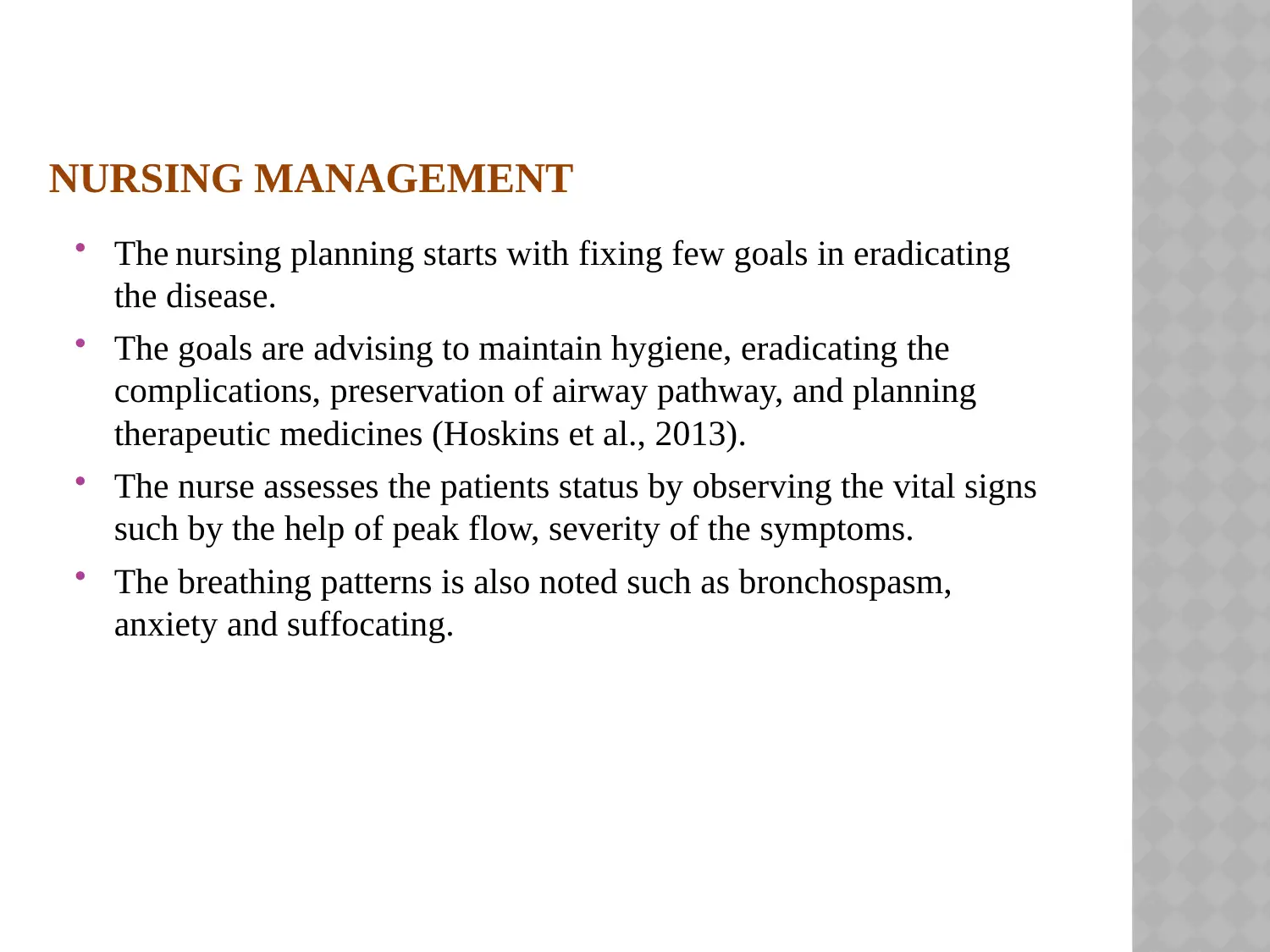
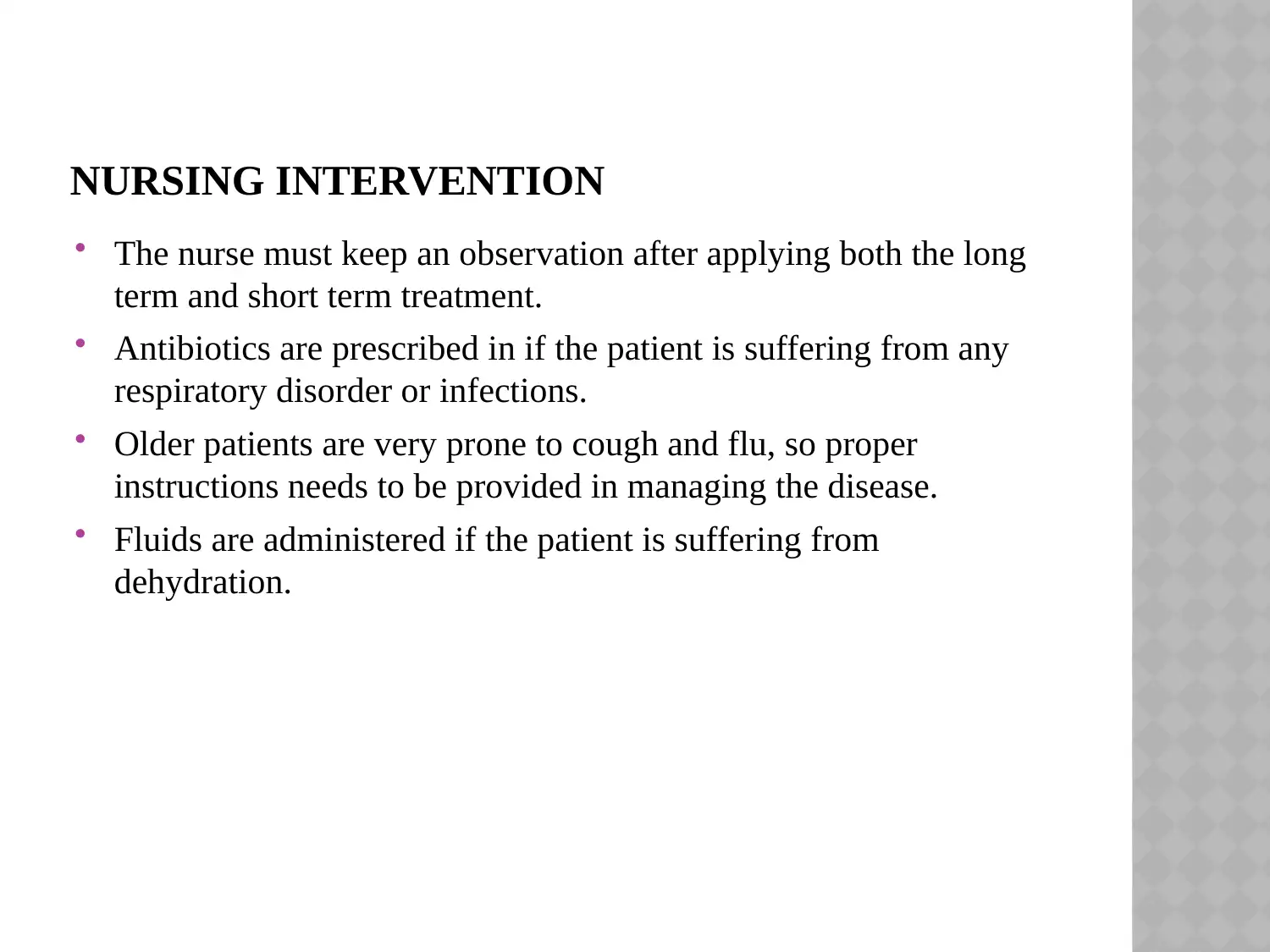
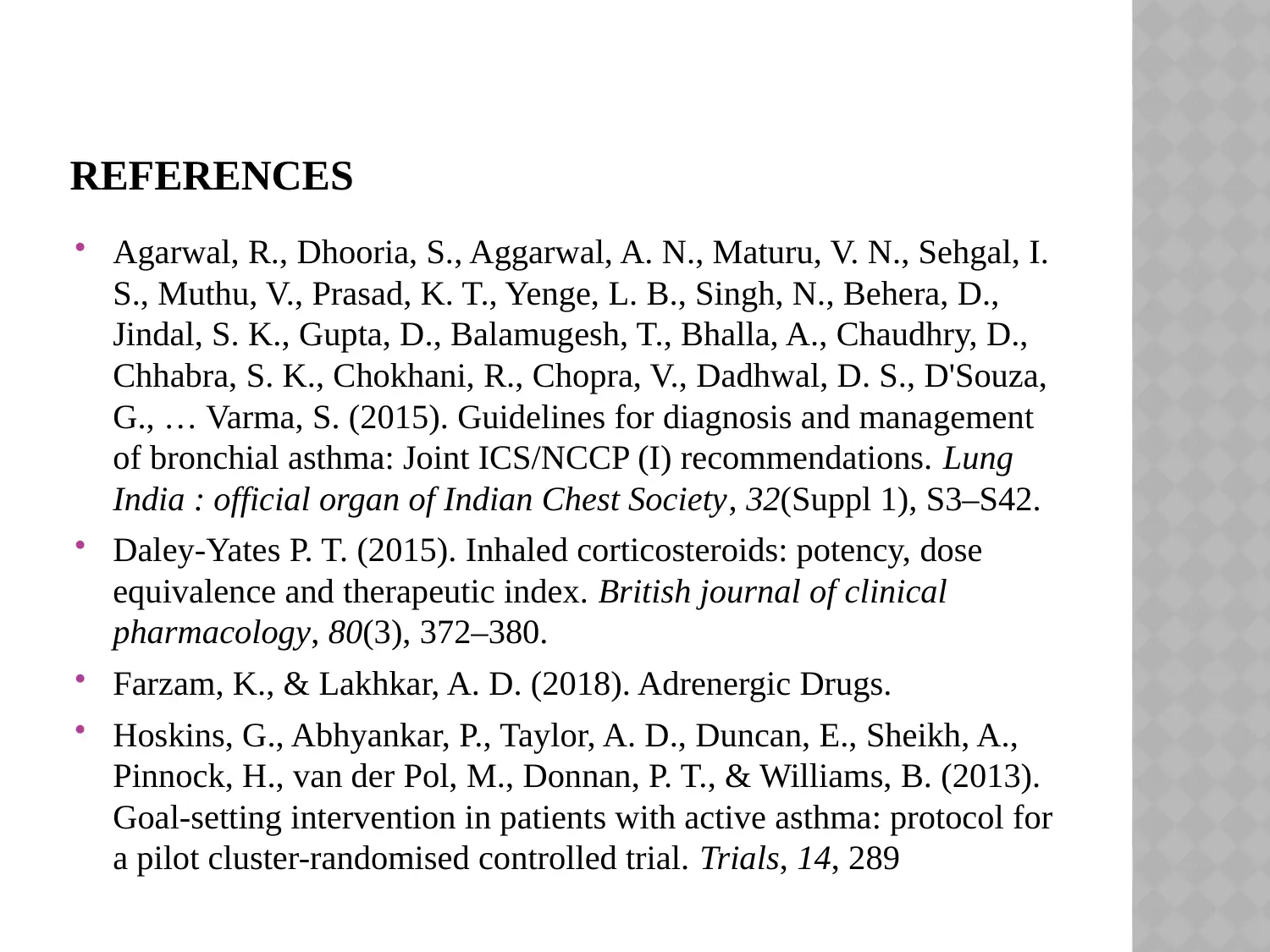





![[object Object]](/_next/static/media/star-bottom.7253800d.svg)